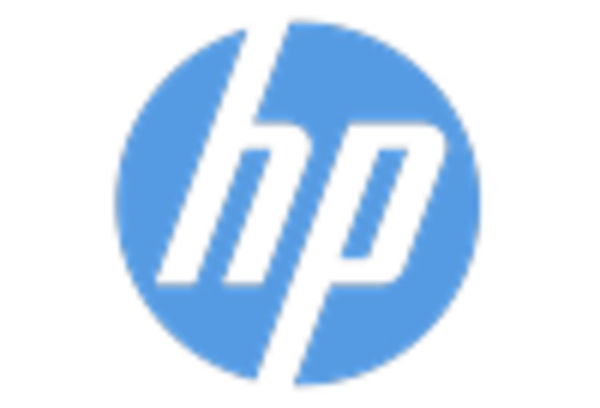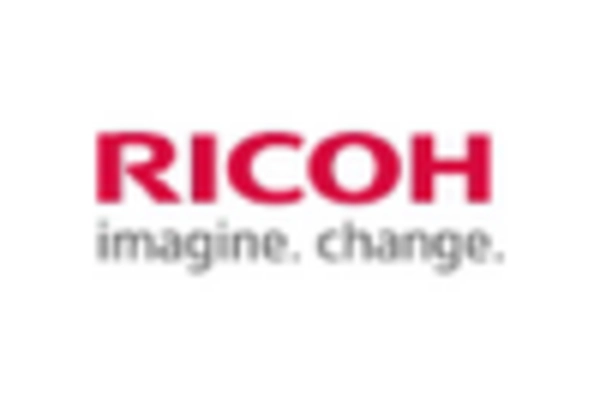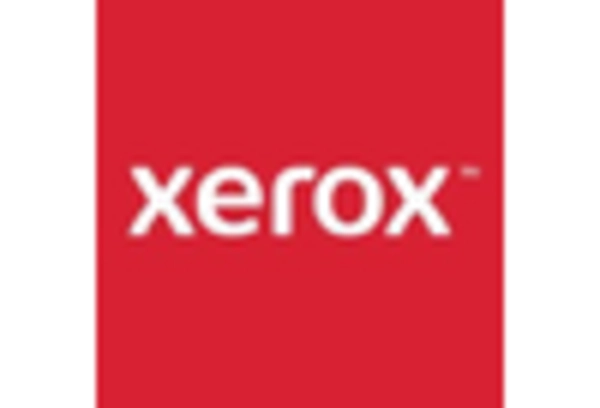Technological Innovations in Printing
Technological advancements play a pivotal role in shaping the Electrophotographic Printing Market. Innovations such as improved imaging technologies, enhanced toner formulations, and automation in printing processes are transforming the landscape. These advancements not only increase the efficiency and speed of printing but also expand the range of applications for electrophotographic printing. For instance, the introduction of digital printing technologies has enabled on-demand printing, reducing lead times and inventory costs. As technology continues to evolve, it is anticipated that the capabilities of electrophotographic printing will further expand, attracting new customers and applications across various sectors.
Rising Demand for High-Quality Printing
The Electrophotographic Printing Market is experiencing a notable increase in demand for high-quality printing solutions. This trend is driven by various sectors, including advertising, packaging, and publishing, which require superior print quality to attract consumers. As businesses strive to enhance their brand image, the need for precise color reproduction and sharp text has become paramount. According to recent data, the market for electrophotographic printing is projected to grow at a compound annual growth rate of approximately 5.2% over the next few years. This growth is indicative of the industry's ability to meet the evolving needs of customers who prioritize quality in their printed materials.
Customization and Personalization Trends
The demand for customization and personalization is significantly influencing the Electrophotographic Printing Market. As consumers increasingly seek tailored products, businesses are responding by offering personalized printed materials. Electrophotographic printing allows for variable data printing, enabling companies to create unique designs and messages for individual customers. This capability is particularly valuable in sectors such as marketing and packaging, where personalized content can enhance customer engagement and loyalty. The trend towards customization is expected to drive growth in the market, as more businesses recognize the competitive advantage that personalized printing solutions can provide.
Environmental Considerations and Sustainability
Sustainability is becoming a crucial factor in the Electrophotographic Printing Market. As environmental concerns rise, businesses are increasingly seeking printing solutions that minimize their ecological footprint. Electrophotographic printing is often viewed as a more sustainable option due to its reduced waste and energy consumption compared to traditional printing methods. The technology allows for the use of recyclable materials and eco-friendly toners, aligning with the growing demand for sustainable practices across various industries. This shift towards environmentally responsible printing solutions is expected to drive the market forward, as companies aim to meet regulatory requirements and consumer expectations for sustainability.
Cost-Effectiveness of Electrophotographic Printing
Cost-effectiveness is a significant driver in the Electrophotographic Printing Market. As organizations seek to optimize their operational expenses, the affordability of electrophotographic printing solutions becomes increasingly appealing. This technology allows for lower production costs, especially for short-run jobs, compared to traditional printing methods. The ability to produce high-quality prints without the need for extensive setup or large print runs makes it an attractive option for businesses. Furthermore, advancements in technology have led to reduced costs of consumables, such as toner and maintenance, further enhancing the economic viability of electrophotographic printing. This trend is likely to continue as more companies recognize the financial benefits associated with this printing method.
















Leave a Comment